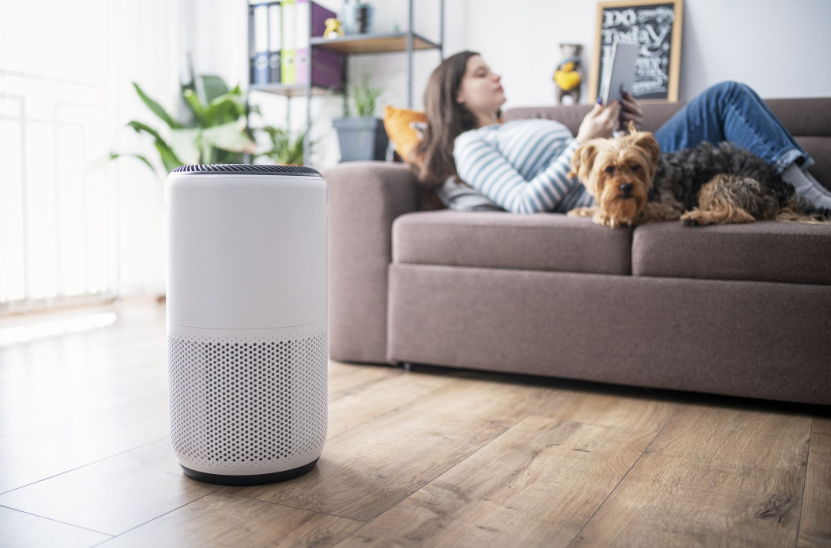Air Purification Strategies to Combat Indoor Contaminants
Indoor air quality has a major impact on our health and well-being, yet it’s often overlooked. Dust, allergens, mold spores, and volatile organic compounds (VOCs) can all contribute to poor air quality, leading to respiratory issues and discomfort. Luckily, there are effective strategies to combat these indoor contaminants and create a healthier, cleaner environment. Here’s a comprehensive look at how you can improve indoor air quality with practical air purification methods.
The Importance of Clean Indoor Air
Why Indoor Air Quality Matters
Indoor air can often be more polluted than outdoor air due to the buildup of contaminants in enclosed spaces. Poor air quality has been linked to health problems such as asthma, allergies, and even more severe respiratory conditions. For sensitive populations like children or the elderly, ensuring clean indoor air is particularly crucial.
Common Indoor Air Pollutants
Understanding the types of contaminants lurking in indoor spaces is the first step to tackling them. Some of the most common pollutants include:
- Dust and pet dander: Microscopic particles that can aggravate allergies.
- Mold spores: Thrive in damp conditions and can trigger respiratory issues.
- Volatile Organic Compounds (VOCs): Found in cleaning products, paints, and furnishings, these chemicals can negatively impact health when inhaled over time.
- Smoke and cooking odors: Can linger and decrease air quality if not properly ventilated.
Effective Air Purification Strategies
Keep Your Space Well-Ventilated
Improving ventilation is a simple yet powerful way to reduce airborne contaminants. Open windows and doors when possible to allow fresh air to circulate, especially when cooking or using cleaning products that release VOCs.
For homes or offices where natural ventilation isn’t sufficient, mechanical ventilation systems, such as heat recovery ventilators (HRVs), can effectively exchange stale indoor air with fresh outdoor air while maintaining energy efficiency.
Use High-Quality Air Filters
Air filters play a crucial role in capturing airborne contaminants. Many heating and cooling systems, such as HVAC setups, come equipped with built-in filters.
- Choose HEPA Filters: High-Efficiency Particulate Air (HEPA) filters capture 99.97% of particles as small as 0.3 microns, including dust, pollen, and mold spores.
- Change Filters Regularly: Replacing filters every 1-3 months ensures optimal performance and prevents clogged filters from reducing airflow.
Investing in regular HVAC service in Bend, O, ensures your system remains efficient and provides clean, filtered air throughout your space.
Incorporate Air Purifiers
Standalone air purifiers are excellent for targeting specific rooms or problem areas. When choosing an air purifier, consider factors like:
- Room Size Compatibility: Ensure the purifier can handle the square footage of your space.
- Filter Type: Look for devices with activated carbon filters and UV-C light in addition to HEPA filters for enhanced air cleaning.
- Noise Levels: Quiet models are ideal for bedrooms or living spaces.
Air purifiers can complement other strategies by continuously scrubbing the air of pollutants in high-traffic or allergen-prone areas.
Control Humidity Levels
High humidity promotes the growth of mold and mildew, while low humidity can lead to dry air, exacerbating respiratory issues. Aim for indoor humidity levels between 30-50% by:
- Using Dehumidifiers: These devices are especially effective in damp basements or bathrooms.
- Fixing Leaks: Address any leaks or standing water that contribute to excess moisture.
- Ventilating Moisture-Prone Rooms: Use exhaust fans in kitchens and bathrooms to reduce humidity during cooking or showering.
Limit Sources of Pollution
Prevention is just as important as purification. Reduce the introduction of contaminants into your indoor space with these measures:
- Use Non-Toxic Cleaning Products: Opt for eco-friendly, low-VOC sprays and detergents.
- Eliminate Smoking Indoors: Smoke contains harmful particles that linger for hours.
- Regular Cleaning: Dusting, vacuuming with HEPA-filter-equipped vacuums, and washing surfaces keep allergens in check.
See also: The Ultimate Checklist for Your Daycare Facility
Add Indoor Plants with Caution
While houseplants can improve your home’s aesthetics and even regulate humidity, their ability to purify air is often exaggerated. Nonetheless, they do contribute minimally to air quality. If using plants, ensure they are properly maintained to avoid becoming sources of mold or pests.
Advanced Air Purification Solutions
UV-C Light Systems
UV-C light technology is an advanced solution to neutralize airborne pathogens. These systems are often integrated with HVAC units to destroy bacteria, viruses, and mold spores, providing an added layer of protection.
Activated Carbon Filters
For spaces prone to odors or chemical pollution, activated carbon filters are highly effective. They work by trapping odor molecules and VOCs, leaving your indoor air fresher and healthier.
Whole-Home Air Purification
Whole-home systems offer comprehensive air cleaning by integrating purification directly into your HVAC system. This ensures continuous air cleansing throughout your entire home or office, without the need for separate units in each space.
Maintenance Tips for Sustained Air Quality
Schedule Regular HVAC Maintenance
Routine servicing of your HVAC system ensures it runs efficiently. Professional inspections can identify issues like clogged filters, leaks, or malfunctioning components that compromise air quality.
Clean Air Ducts
Dust and debris can accumulate in air ducts over time, recirculating contaminants into your space. Cleaning ducts periodically ensures cleaner air delivery and better airflow.
Monitor Air Quality
Invest in indoor air quality monitors to keep tabs on pollutant levels. Some devices even sync with your smartphone, providing real-time updates and recommendations.
Small Changes, Big Health Benefits
Taking a proactive approach to indoor air purification doesn’t just improve your environment—it enhances your overall health and quality of life. By combining simple habits like ventilating regularly with advanced solutions like air purifiers or whole-home systems, you can effectively combat indoor contaminants. A cleaner, fresher space awaits when air quality becomes a priority.






